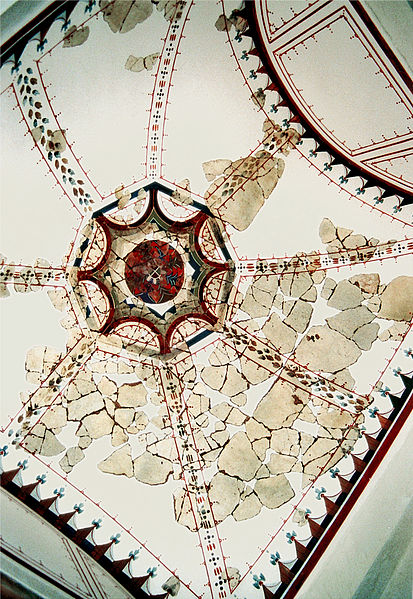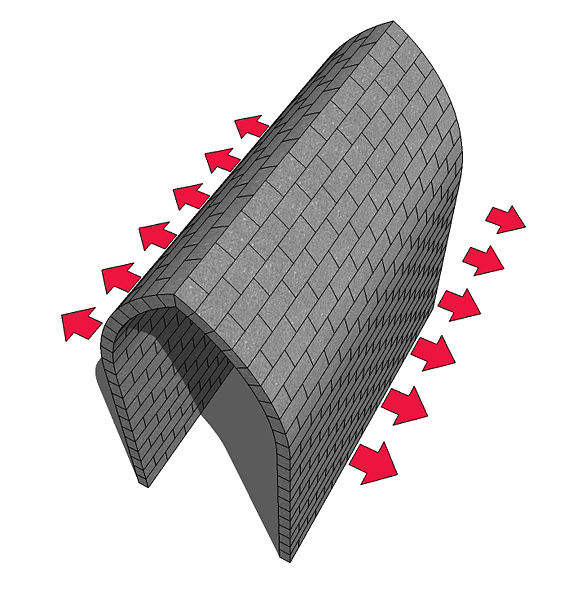A barrel vault, also known as a tunnel vault, wagon vault or wagonhead vault, is an architectural element formed by the extrusion of a single curve along a given distance. The curves are typically circular in shape, lending a semi-cylindrical appearance to the total design. The barrel vault is the simplest form of a vault: effectively a series of arches placed side by side. It is a form of barrel roof.
Coffered ceiling of the barrel-vaulted nave in the Temple of Jupiter at Diocletian's Palace in Split, Croatia. Built early 4th century.
Nave of Lisbon Cathedral with a barrel vaulted soffit. Note the absence of clerestory windows, all of the light being provided by the Rose window at one end of the vault.
The Cloisters, New York City
Roman barrel vault at the villa rustica Bad Neuenahr-Ahrweiler, Germany.
In architecture, a vault is a self-supporting arched form, usually of stone or brick, serving to cover a space with a ceiling or roof. As in building an arch, a temporary support is needed while rings of voussoirs are constructed and the rings placed in position. Until the topmost voussoir, the keystone, is positioned, the vault is not self-supporting. Where timber is easily obtained, this temporary support is provided by centering consisting of a framed truss with a semicircular or segmental head, which supports the voussoirs until the ring of the whole arch is completed.
Gothic rib vault ceiling of the Saint-Séverin church in Paris
In a pitched-brick vault the bricks lean (are pitched) against an existing wall.
St Paul's Cathedral Choir looking east, London
Pointed barrel vault showing direction of lateral forces








